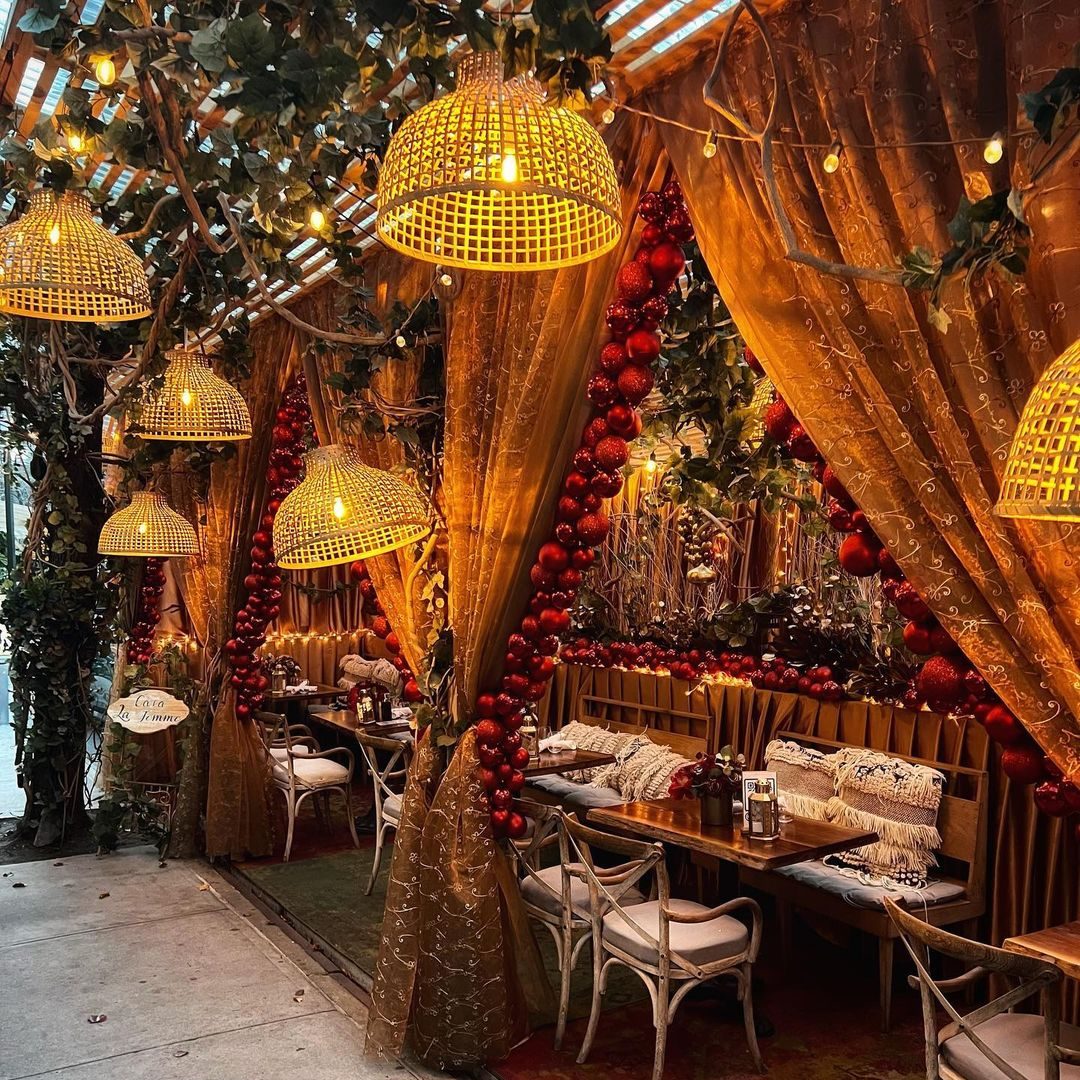Pan Asian Dining Islamabad: Savor Authentic Asian Dishes
Wiki Article
Savor Genuine Oriental Food With a Pan-Asian Twist for a Cooking Journey
Starting a culinary trip via authentic Asian cuisine, boosted with a Pan-Asian spin, offers an unique chance to discover the abundant tapestry of tastes that specify the region's diverse cooking customs. This experience invites you to relish the beautiful balance of preferences-- pleasant, salty, spicy, and sour-- harmonized by aromatic herbs and seasonings. Visualize the cutting-edge combination of Thai curry and ramen or the unforeseen delight of sushi burritos. As you contemplate these luring dishes, think about the social narratives and historical influences that shape them, each bite providing a story waiting to be discovered.
Discovering Pan-Asian Tastes
In the realm of international gastronomy, Pan-Asian cuisine sticks out for its amazing diversity and the harmonious interaction of flavors from numerous Eastern societies. This cooking approach celebrates the unique active ingredients and rich practices discovered across the continent, producing a tapestry of tastes that is both enjoyable and interesting. Trick to Pan-Asian cuisine is its ability to balance different tastes-- pleasant, salty, spicy, and sour-- while highlighting the freshness and high quality of each component.From the umami-rich soy sauce of Japan to the fiery chili peppers of Thailand, Pan-Asian food uses a comprehensive scheme of tastes. These aspects are commonly incorporated in creative ways, improving meals with layers of complexity. For circumstances, using great smelling natural herbs such as lemongrass and cilantro, usual in Vietnamese and Thai cuisine, includes a refreshing brightness to meals, while the unification of coconut milk supplies a luscious, rich appearance.
The focus on fresh fruit and vegetables and fragrant seasonings ensures that each meal is not just a banquet for the palate yet also for the detects. Pan-Asian food invites restaurants to embark on a culinary trip, checking out the huge and varied landscapes of Asian gastronomy with every bite.
Blend Dishes to Try
While Pan-Asian cuisine is commemorated for its typical flavors, the modern-day cooking landscape is significantly welcoming fusion dishes that blend these timeless elements with impacts from other areas. This innovative strategy not just honors the abundant heritage of Oriental culinary arts yet likewise introduces novel taste experiences that interest modern tastes.
An archetype of such a blend dish is the Korean-Mexican taco, where seasoned bulgogi beef is covered in a warm tortilla, covered with kimchi and a zesty gochujang-infused salsa. This combination weds the bold, savory tastes of Korea with the vivid, fresh aspects of Mexican food. Similarly, sushi burritos have actually gained popularity, integrating the delicate creativity of Japanese sushi with the passionate, hand-held ease of a burrito, usually featuring fusion components like tempura shrimp and avocado with a drizzle of wasabi mayo.
One more notable meal is Thai curry ramen, which instills the luscious, fragrant flavors of Thai curry right into the calming brew of typical Japanese ramen, developing an unified blend that tantalizes the detects. These blend recipes extend beyond mere novelty; they stand for a cooking discussion between societies, encouraging exploration and advancement worldwide of Pan-Asian cuisine.
Necessary Components and Seasonings
To absolutely value Pan-Asian cuisine, one should comprehend the essential ingredients and seasonings that create its foundation. This diverse culinary style attracts from a rich tapestry of Asian traditions, employing a harmonious mix of textures and flavors. Trick components include soy sauce, fish sauce, and oyster sauce, which present a tasty umami depth vital to Eastern meals. Complementary to these are rice vinegar and mirin, offering a fragile level of acidity and sweet taste.Fragrant aspects are critical, with lemongrass, garlic, and ginger being ubiquitous across numerous Pan-Asian dishes. These ingredients give a great smelling base that improves the complexity of tastes. Flavors such as star anise, cardamom, and cinnamon present heat and character, resembling influences from areas like China and India.

Cooking Techniques and Tips
Understanding the art of Pan-Asian cuisine calls for knowledge with its unique cooking methods, each adding to the vibrant tapestry of tastes this cooking custom is commemorated for. Central to these techniques is the stir-fry, a rapid food preparation method that maintains the nutritional integrity and dazzling colors of ingredients. Using a wok, the stir-fry technique permits even heat circulation, important for accomplishing the particular texture and flavor equilibrium of Pan-Asian recipes.One more fundamental strategy is steaming, particularly widespread in Chinese cuisine. This mild technique keeps the natural tastes and nutrients of ingredients, making it excellent for seafood and veggies. Dumplings, a precious staple, typically profit from steaming, resulting in soft, succulent appearances.
Grilling, also indispensable, presents great smoky midsts to dishes such as Oriental bulgogi or Japanese yakitori (pan asian dining Islamabad). This strategy commonly involves seasoning components, allowing flavors to permeate deeply before food preparation over an open flame or warmer
Lastly, understanding the art of stabilizing flavors-- wonderful, sour, salted, bitter, and umami-- is crucial. Properly layering these components can raise a recipe from ordinary to remarkable, providing a complex and satisfying cooking experience that personifies the significance of Pan-Asian cuisine.
Eating Experiences Worldwide
Around the world, Pan-Asian cuisine provides an unequaled eating experience, commemorated for its abundant tapestry of tastes and dynamic discussions. This cooking sensation has transcended social boundaries, capturing the hearts and tastes buds of food fanatics worldwide. In worldwide cities fresh York, London, and Sydney, Pan-Asian restaurants function as fusions where culinary traditions from Thailand, Japan, China, and past merge, supplying restaurants with a diverse mix of meals that highlight the area's diversity.The global allure of Pan-Asian food hinges on its capability to use both credibility and technology. Cooks masterfully wed conventional ingredients such as lemongrass, soy sauce, and miso with modern methods, leading to dishes that are both familiar and refreshingly new. This combination allows restaurants to get started on a cooking journey that appreciates heritage while welcoming modernity.
In addition, dining experiences are boosted through attentively developed environments that show the values of Pan-Asian aesthetics. From minimal Japanese-inspired insides to vibrant Thai-themed rooms, each restaurant uses a distinct ambiance that matches the culinary offerings. Because of this, patrons are not merely eating a dish but partaking in a social experience, making Pan-Asian eating a really worldwide sensation.
Final Thought
The expedition of Pan-Asian food uses an extensive understanding of the intricate interaction of tastes and cooking practices across Asia. By accepting blend dishes such as Thai curry ramen and sushi burritos, the cooking trip not only highlights the adaptability of conventional ingredients however additionally showcases cutting-edge modern strategies. This gastronomic journey, improved by necessary seasonings and cooking methods, gives an unique possibility to value the multiculturalism and culinary artistry that define Pan-Asian cuisine on an international scale.Beginning on a cooking trip Best ambiance restaurants Islamabad via genuine Eastern food, enhanced with a Pan-Asian twist, provides an one-of-a-kind opportunity to check out the rich tapestry of flavors that specify the area's varied culinary customs.In the realm of global gastronomy, Pan-Asian cuisine stands out for its impressive diversity and the unified interaction of tastes from numerous Oriental societies. Trick to Pan-Asian food is its ability to stabilize contrasting flavors-- sweet, salty, spicy, and sour-- while highlighting the freshness and top quality of each component.

Report this wiki page